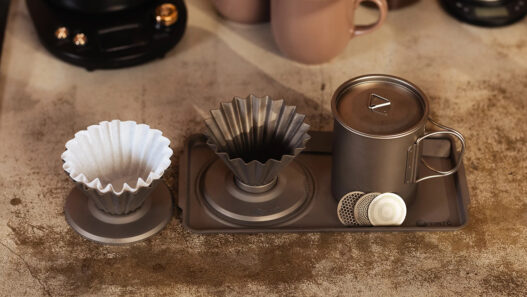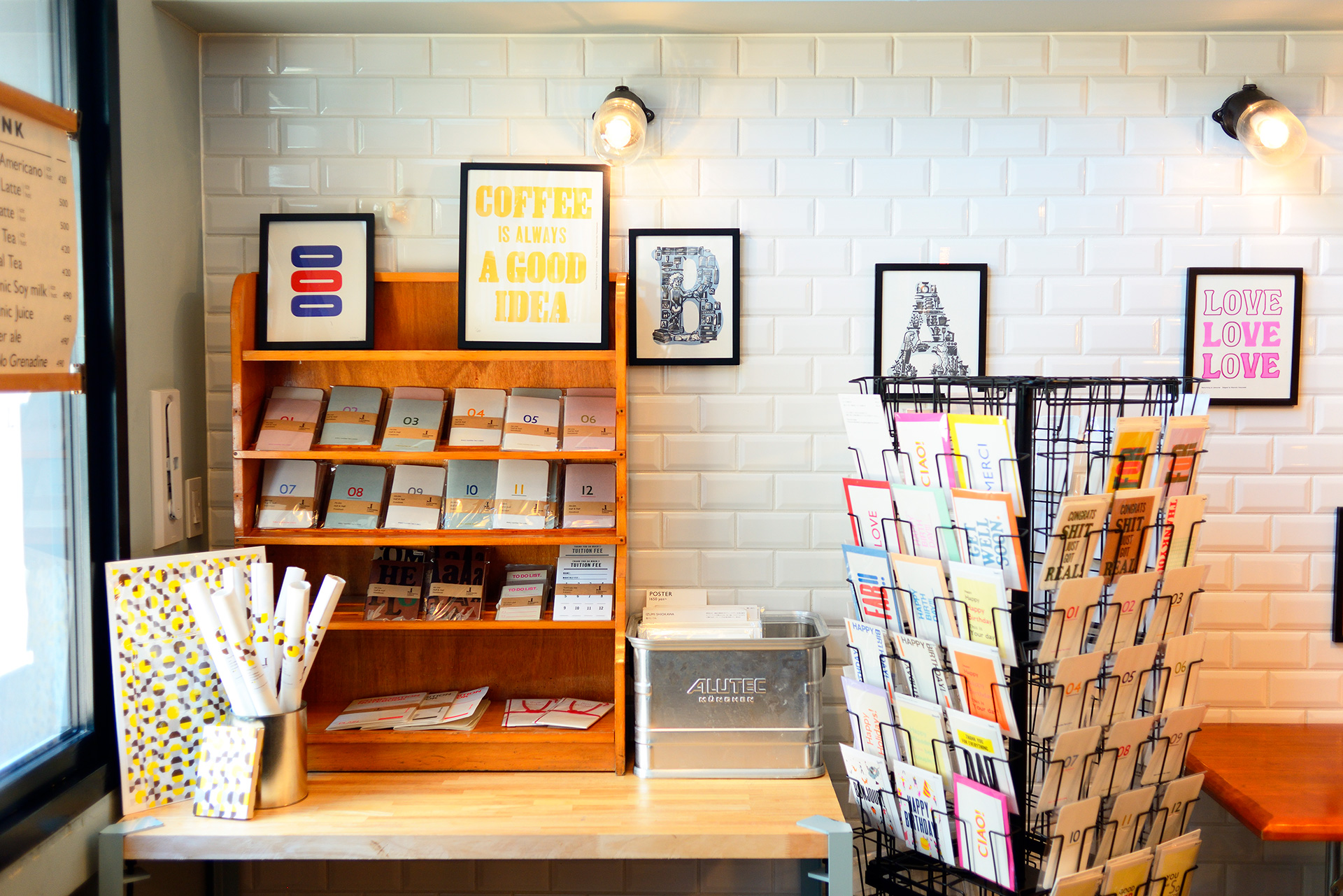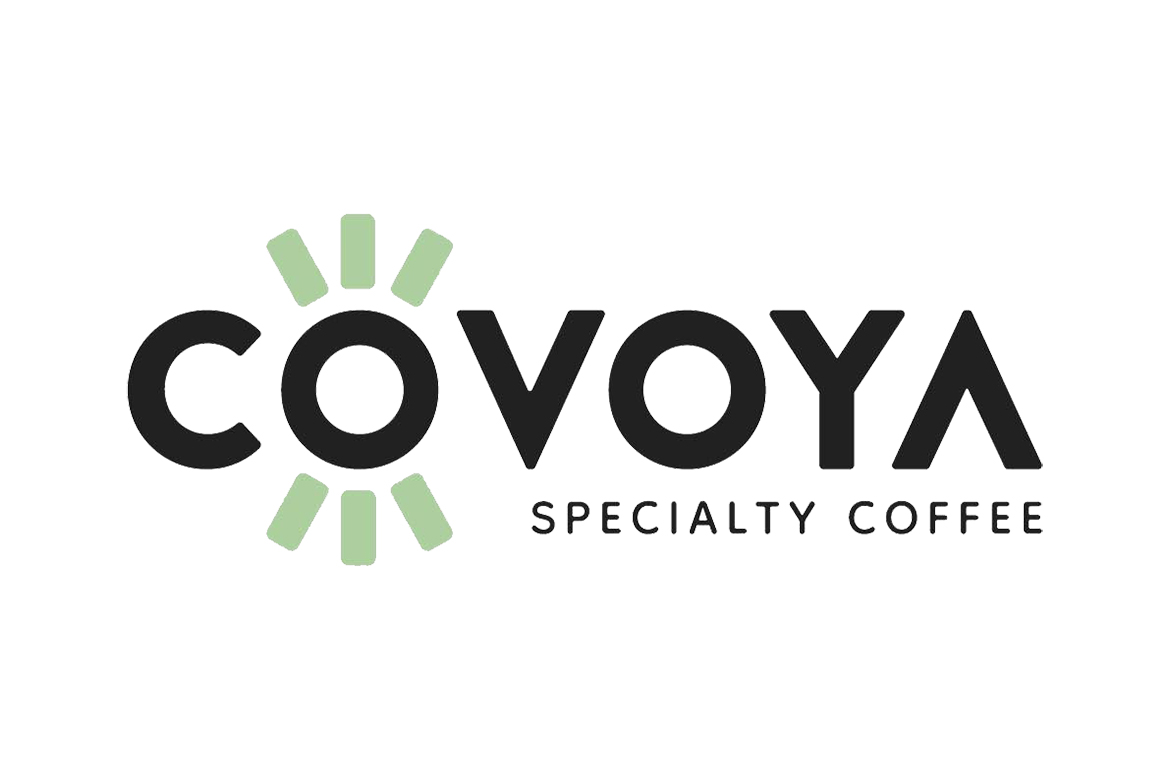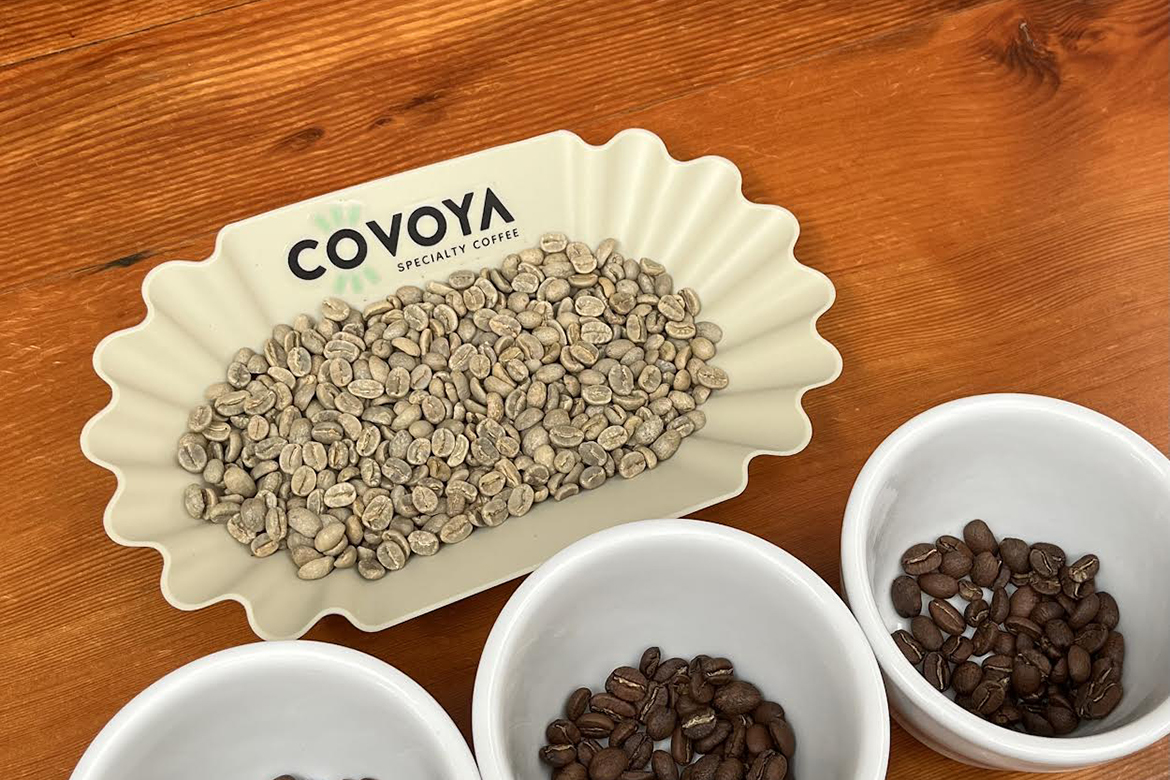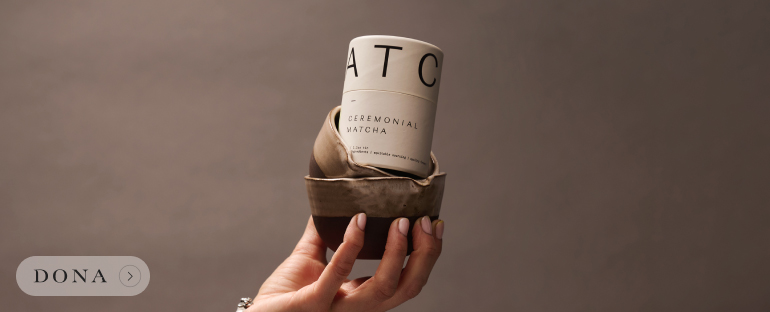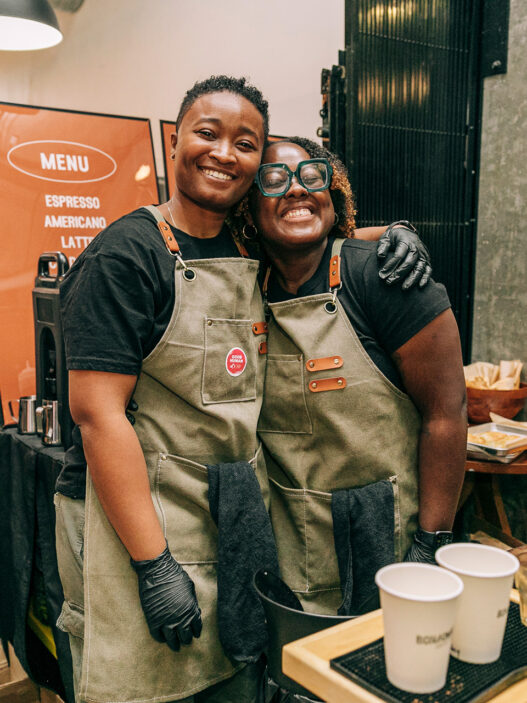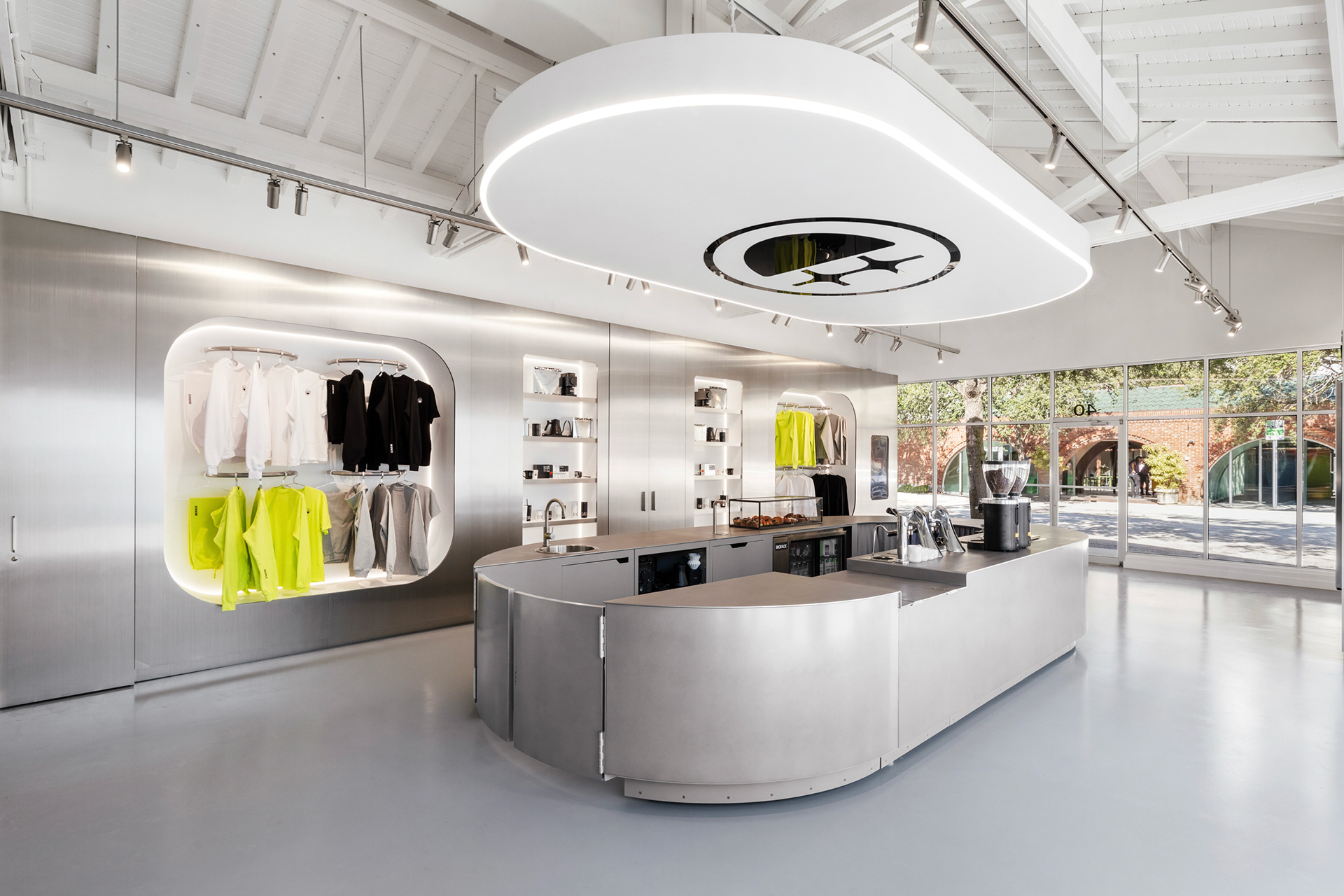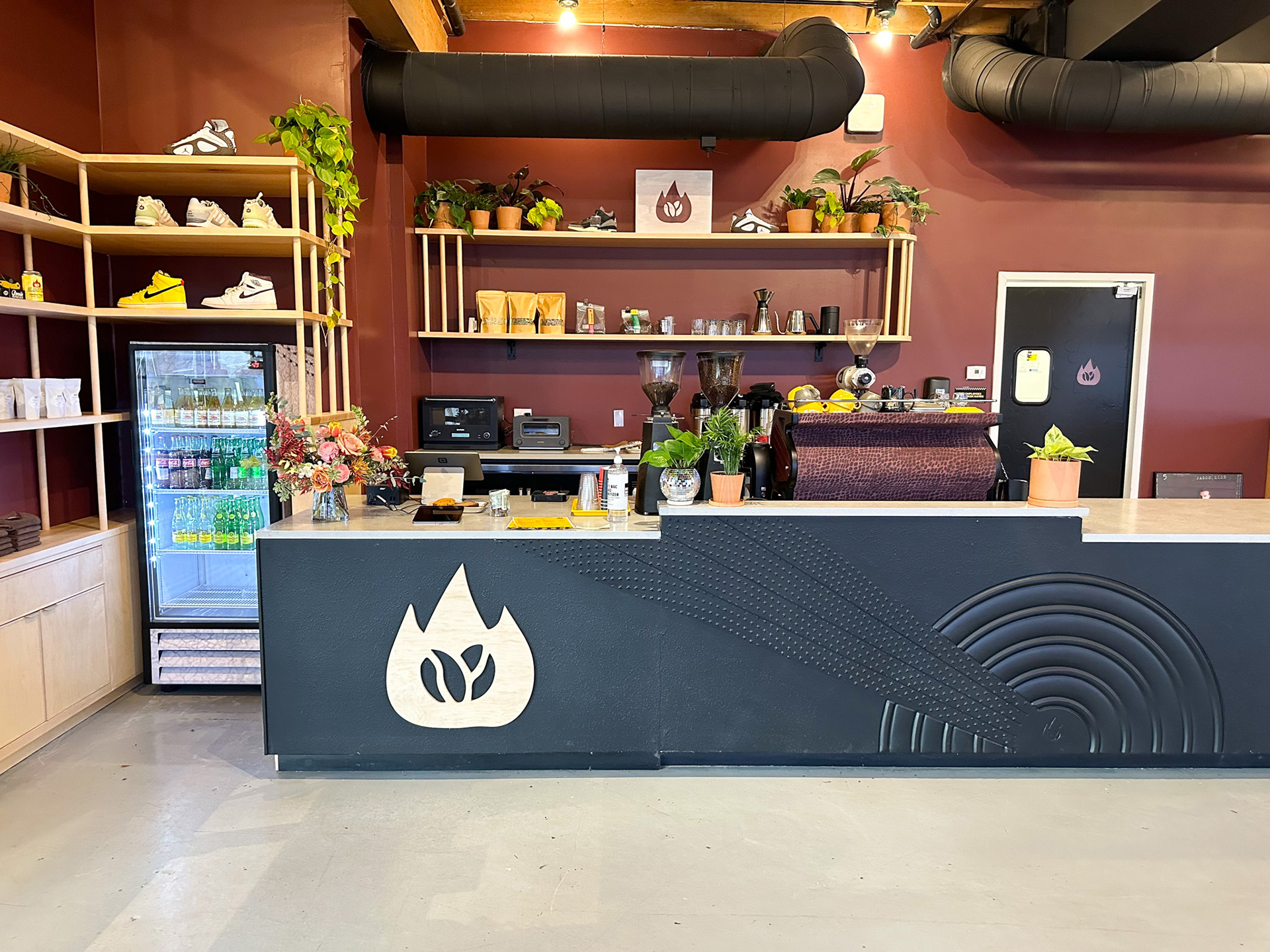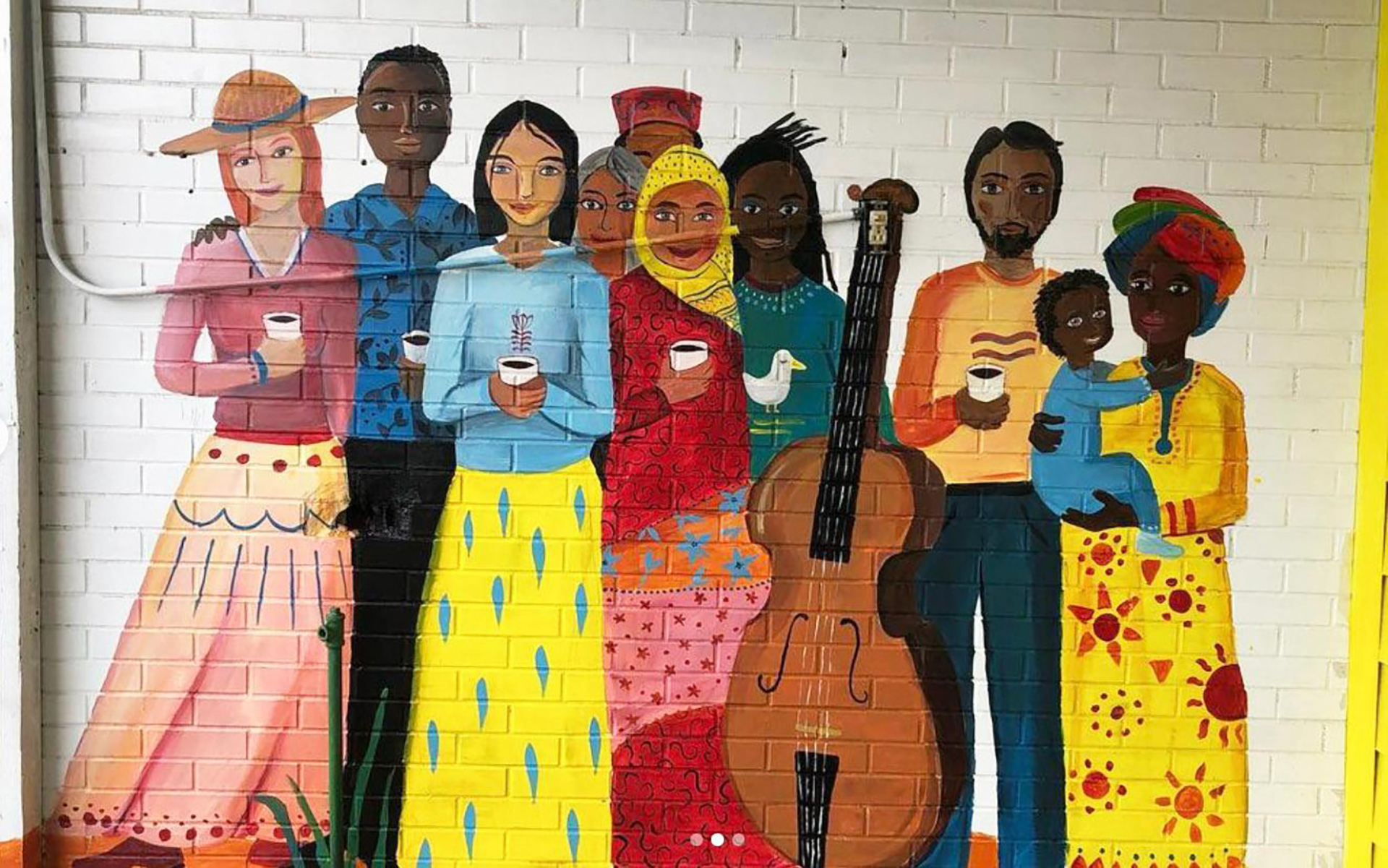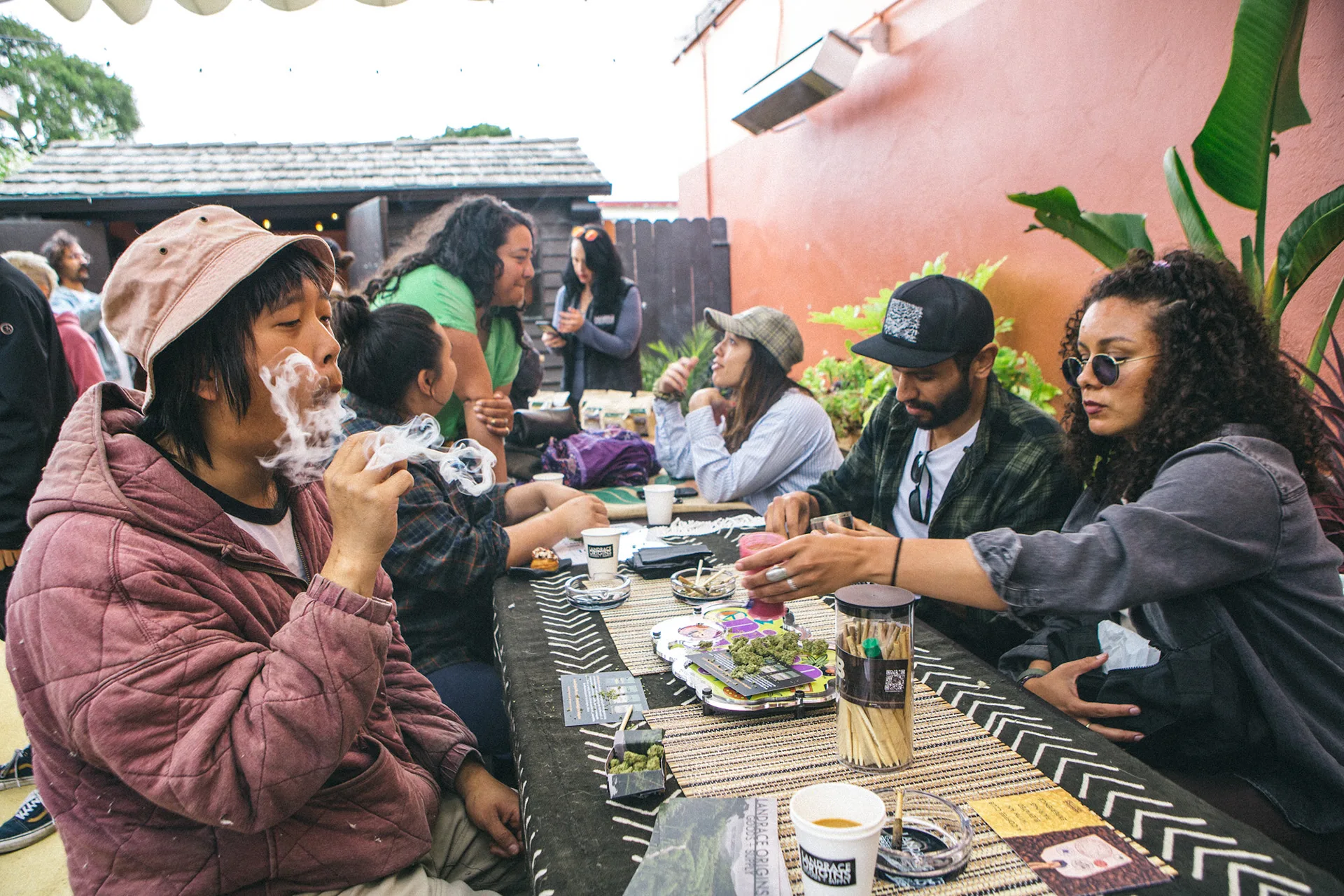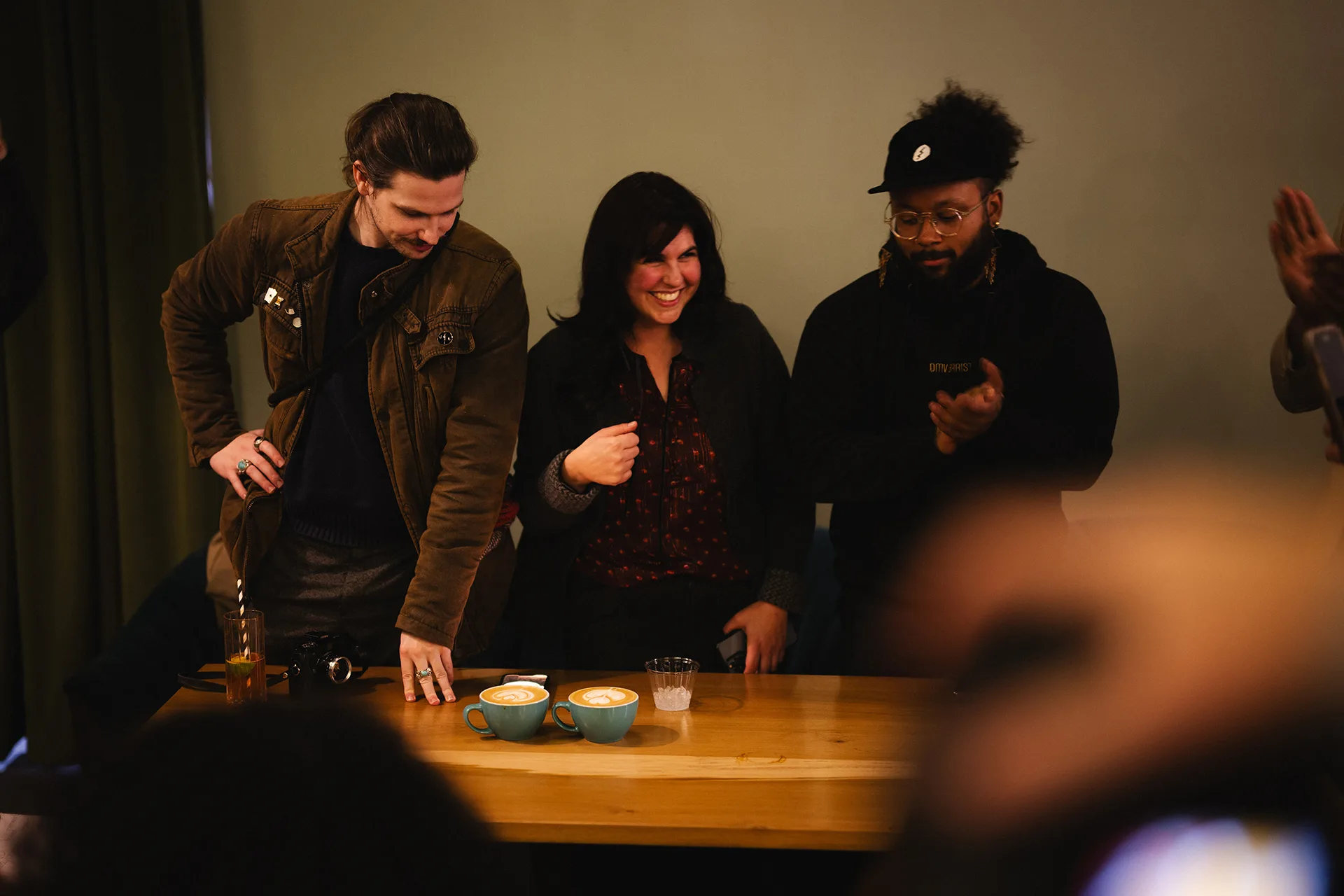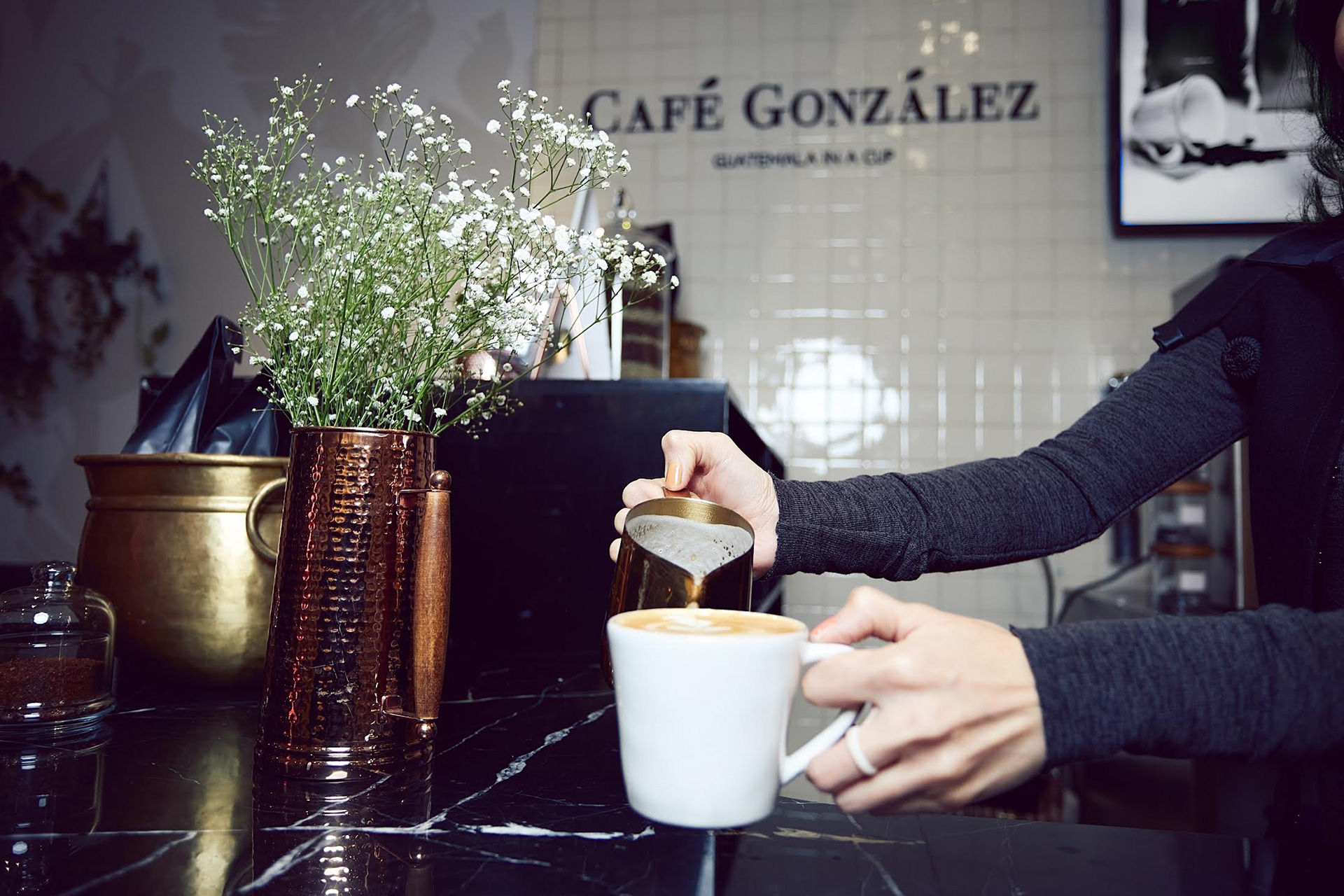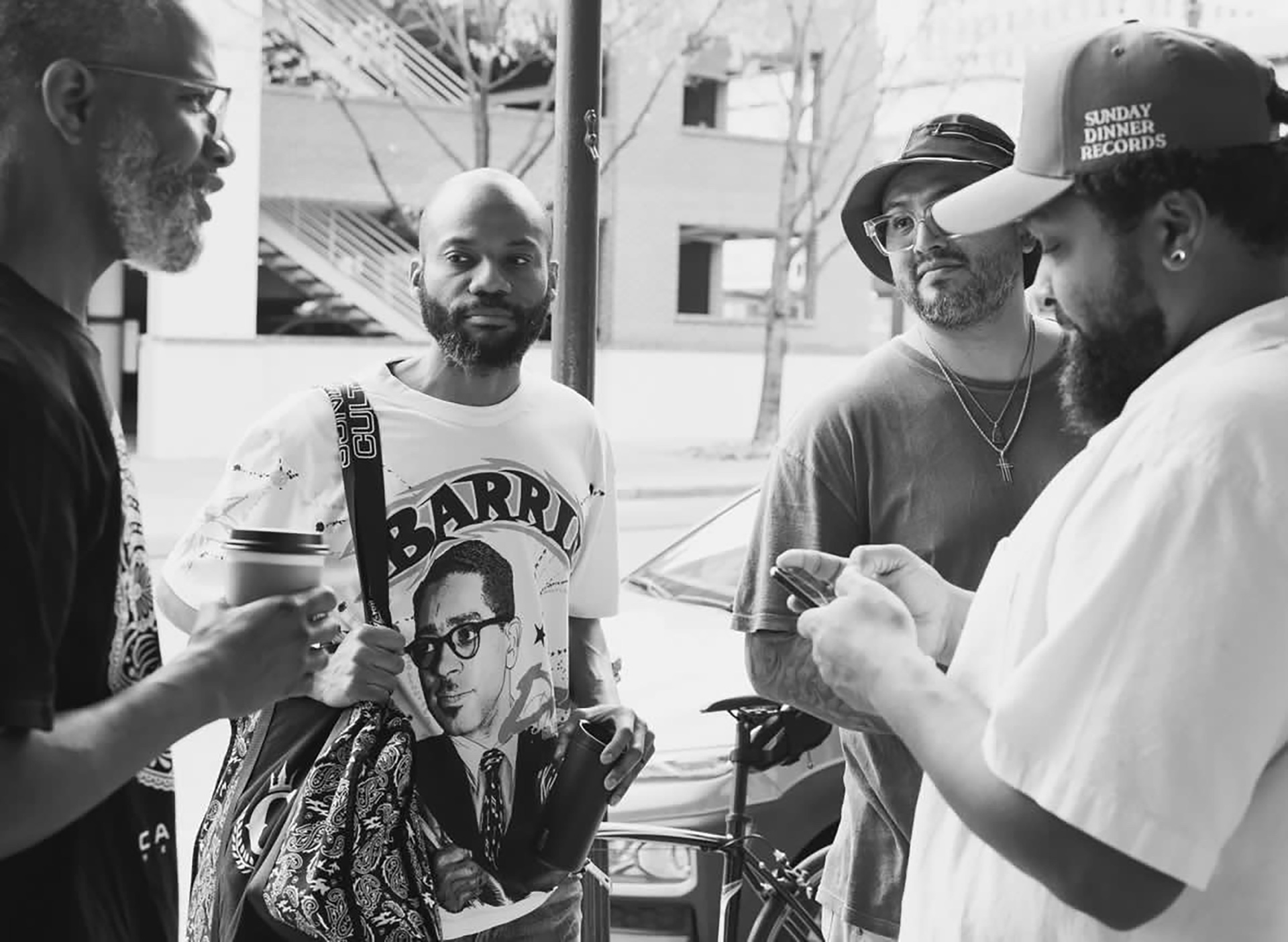With its industrial-looking charcoal gray silhouette and its large windows facing the street, the building that houses Letterpress Letters stands out from the architectural monotony of the surroundings. It is also disconcerting inside. You would think you were entering in a stationery goods and books store, greeted by display units full of hand printed cards, typographic posters on the wall, and a tall bookshelf. Here, words and letters has been elevated to art, exhibited for the beauty of their typography, their curves and their upstrokes: they are everywhere, on the walls, the displays, the windows. Even on cups of coffee, whose fragrance perfumes the place, stamped with a big L, for “LetterPress Letters.” The drink is here deeply linked to another craft: letterpress printing.
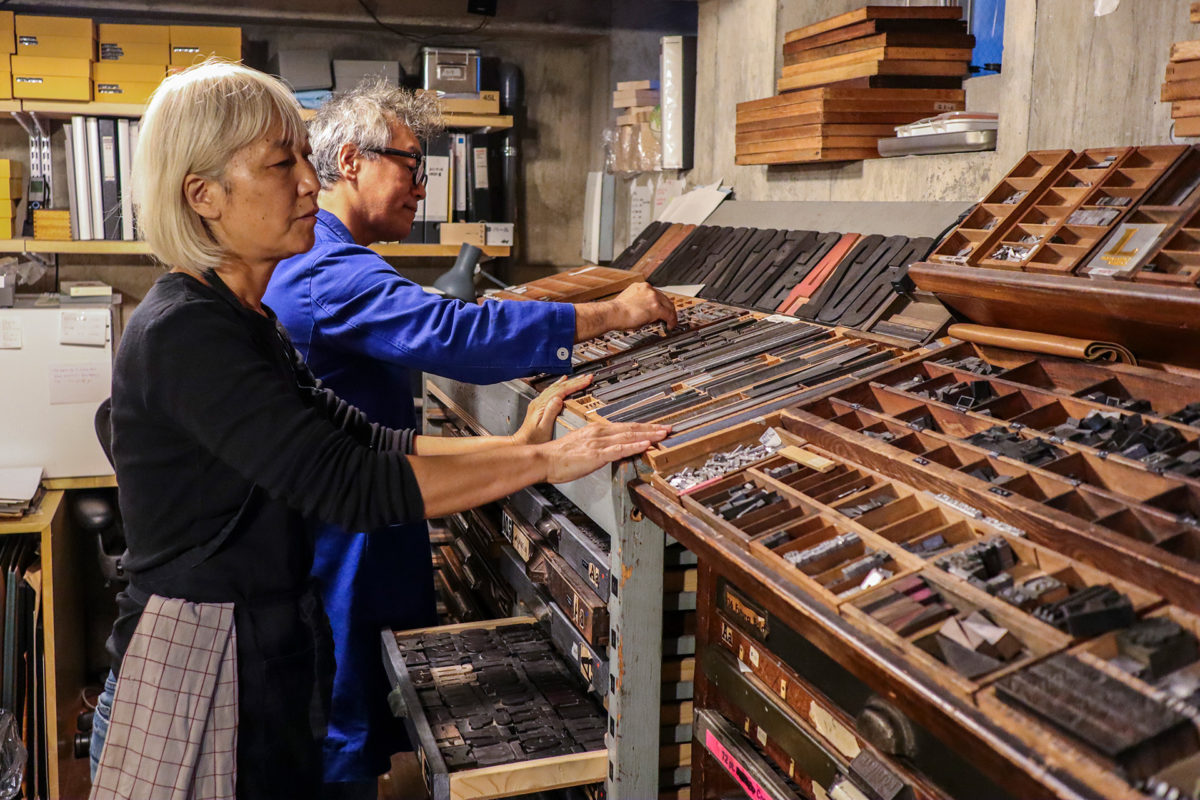
The all story begins a few steps away, in a building next to the store, at the headquarters of Mitsunobu Hosoyamada’s design agency. Dressed in a long Klein blue work jacket, the graphic designer and co-founder of Letterpress Letters leads us into the basement of the tall, narrow building, which has housed his company for the last 15 years. The place is like a Gutenberg’s Cave. Against the wall, three letterpress printing machines and dozens of boxes with drawers, which contain wooden and metal letters. Hosoyamada fell in love with the craft during a trip to Europe and the United States, and soon became obsessed with the world of letterpress, once considered an all-but-dying art that has experienced something like an unexpected renaissance here in the 21st century.
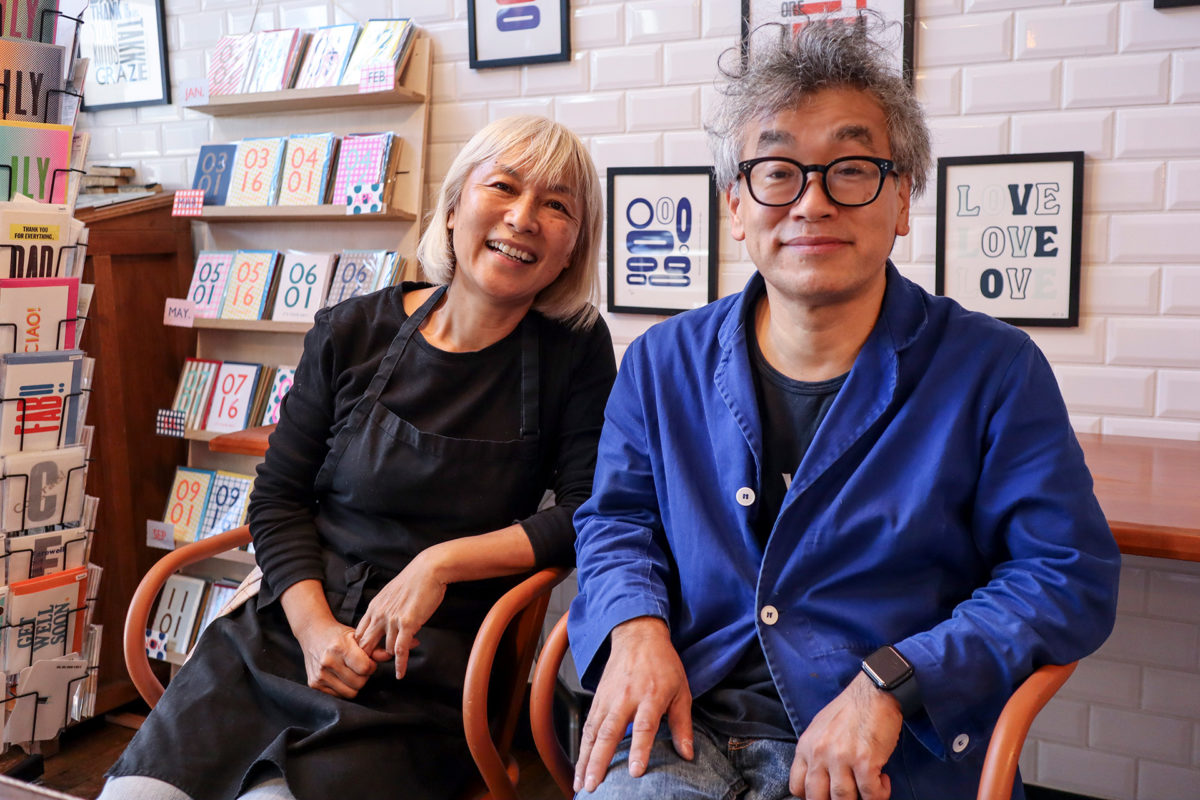
“I like this craft, which takes the complete opposite from today’s digitalized world,” says Hosoyamada. At first he decided to buy a couple of machines, but there’s an education aspect to it as well. “While the technique is more and more used overseas,” he tells me, “I wanted to contribute to making it popular in Japan too.” The press machines are the centerpieces of the studio, where people come to learn and experiment with typography during workshops he organizes, together with his wife Aya Tamura, on a regular basis. “What I like about this technique is that you don’t have to be an artist, and yet, you get to experiment with a very creative process, very artisanal too,” the designer says, while stroking the wooden block letters with his finger.
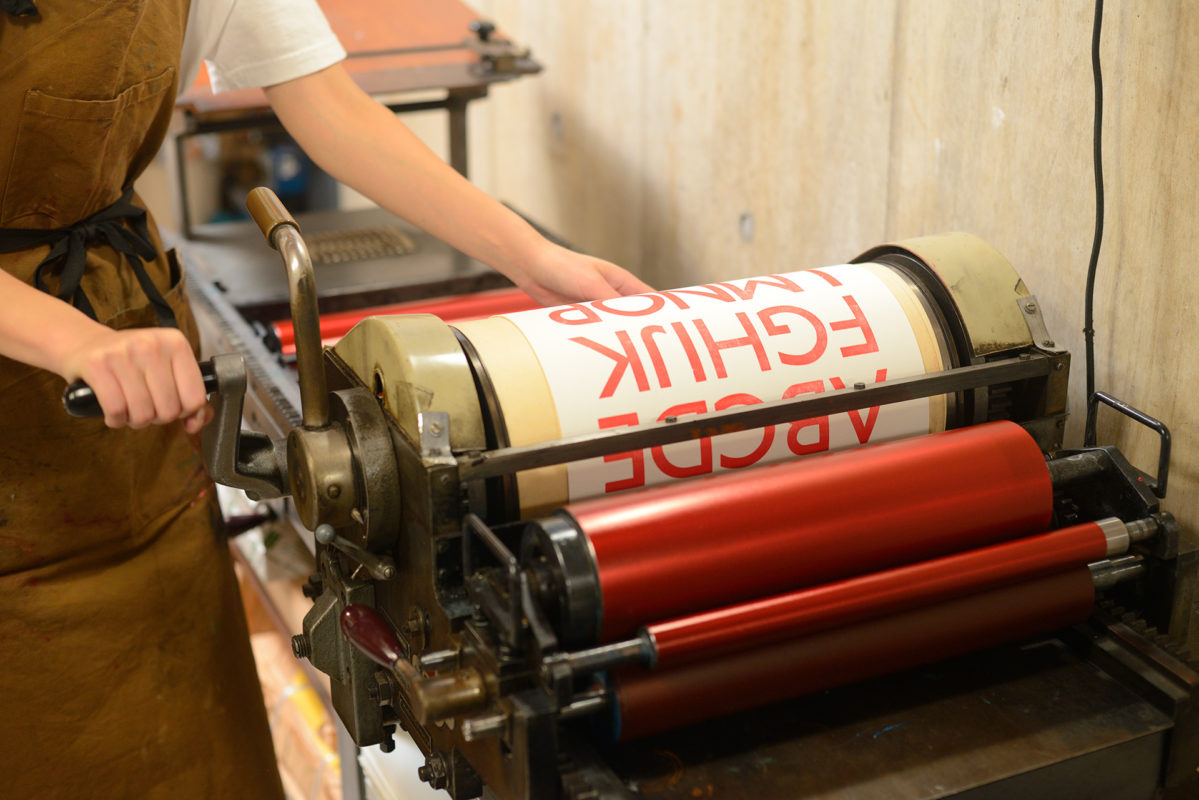
On the walls, the word “coffee” appears here and there, in a variety of shapes and sizes. As the first letterpress printing sessions were taking place, transforming the former cafeteria reserved for employees into a cafe became an obvious choice.”We wanted to create a friendly place where people could meet after a workshop for a coffee or something to eat,” Tamura tells me. She’s trained previously at the Cordon Bleu cooking school in Tokyo and developed a love for French pastry while she as previously working in Paris for a French cosmetic brand.
As with letterpress printing, her approach to cuisine and coffee values craftsmanship: “As I had little experience with coffee, I asked for a friend who is a specialist in the field, and he recommended the Tokyo roastery Single O. I find their coffee excellent, well balanced, which goes well with my pastries,” says Tamura, while preparing coffee.
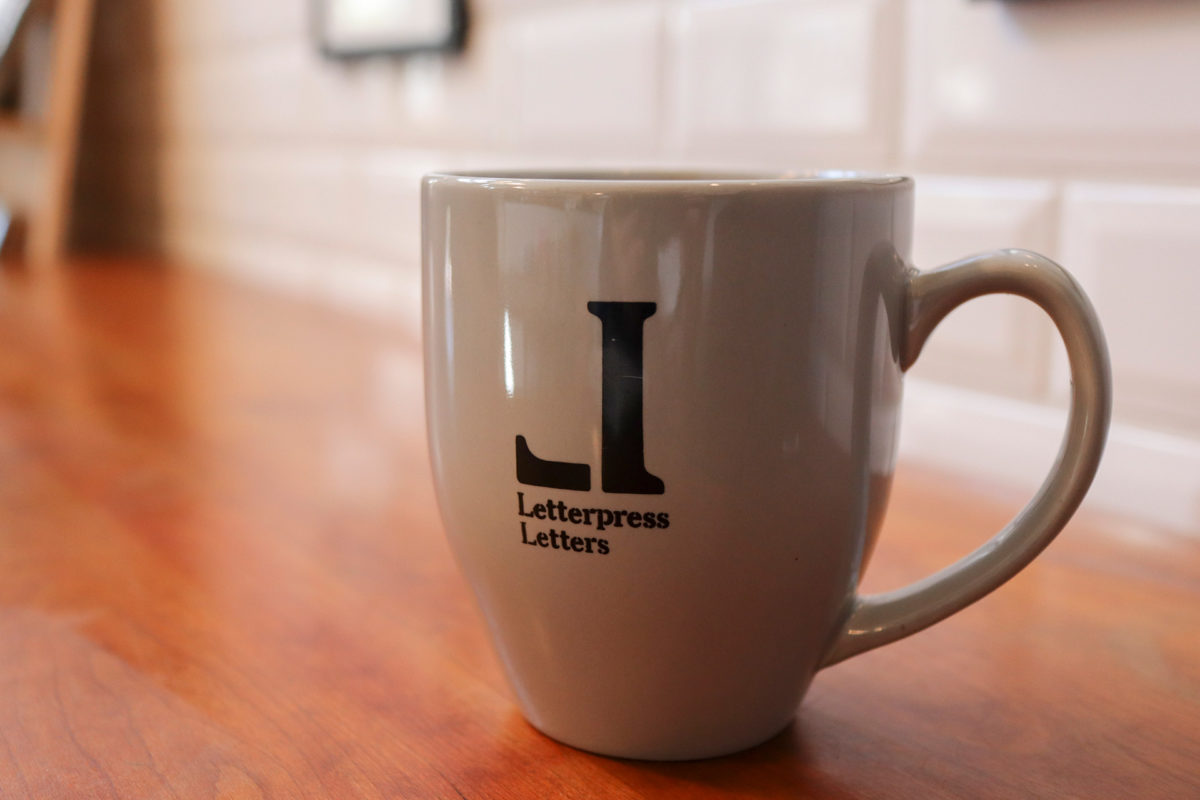
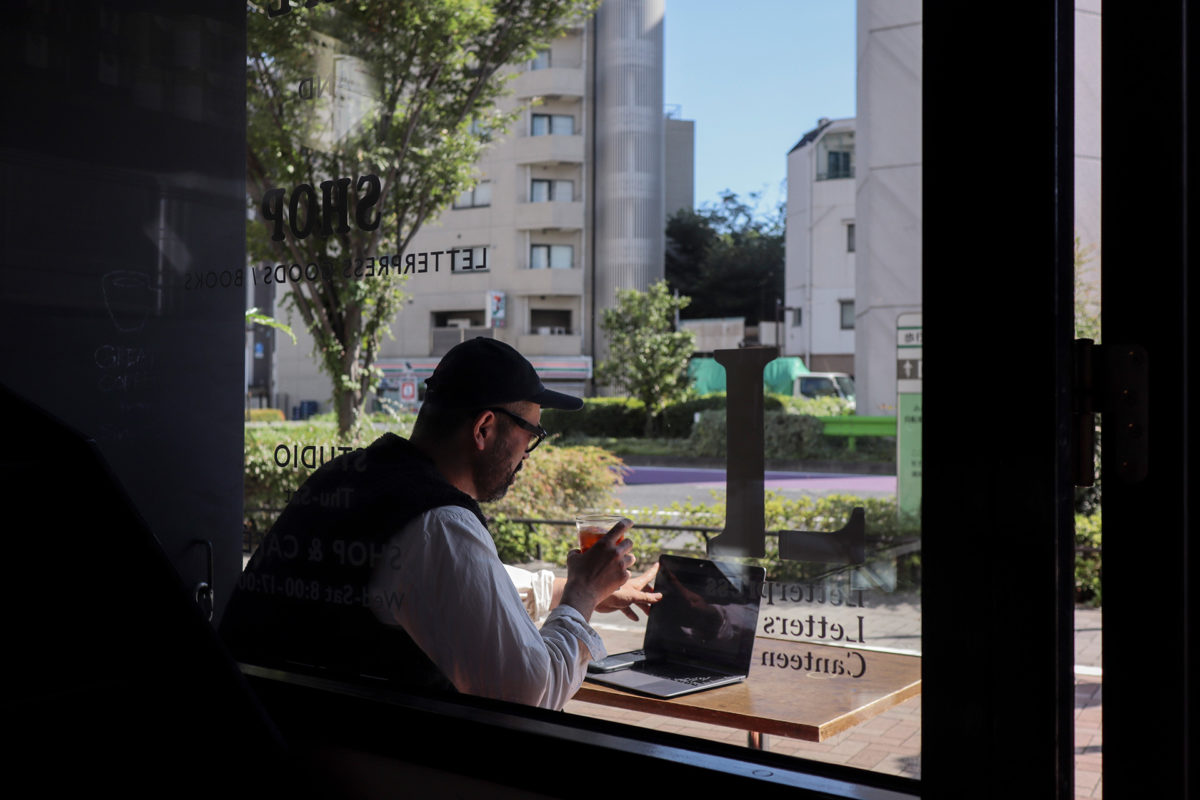
The cafe is less than one year old, but by judging by the large number of regular customers who are visiting the place early in the morning, it can be considered something a success story here in picky Shibuya, where there is no shortage of good coffee. “I think people needed this,” explains Hosoyamada. “When I moved to the neighborhood, there were more local businesses, even a small bookstore… but they closed; we wanted to recreate a place that brings people together.”
During the pandemic, the couple decided to print their own newspapers that they distributed in the neighborhood, in order to deepen connection within the Shibuya community. Today, Letterpress Letters has resumed its popular printing workshops and the couple is planning to organize meet-ups with hand printing artists, to continue building a community around their café. A “third place” coffeeshop at its best, built letter by letter, block by block.
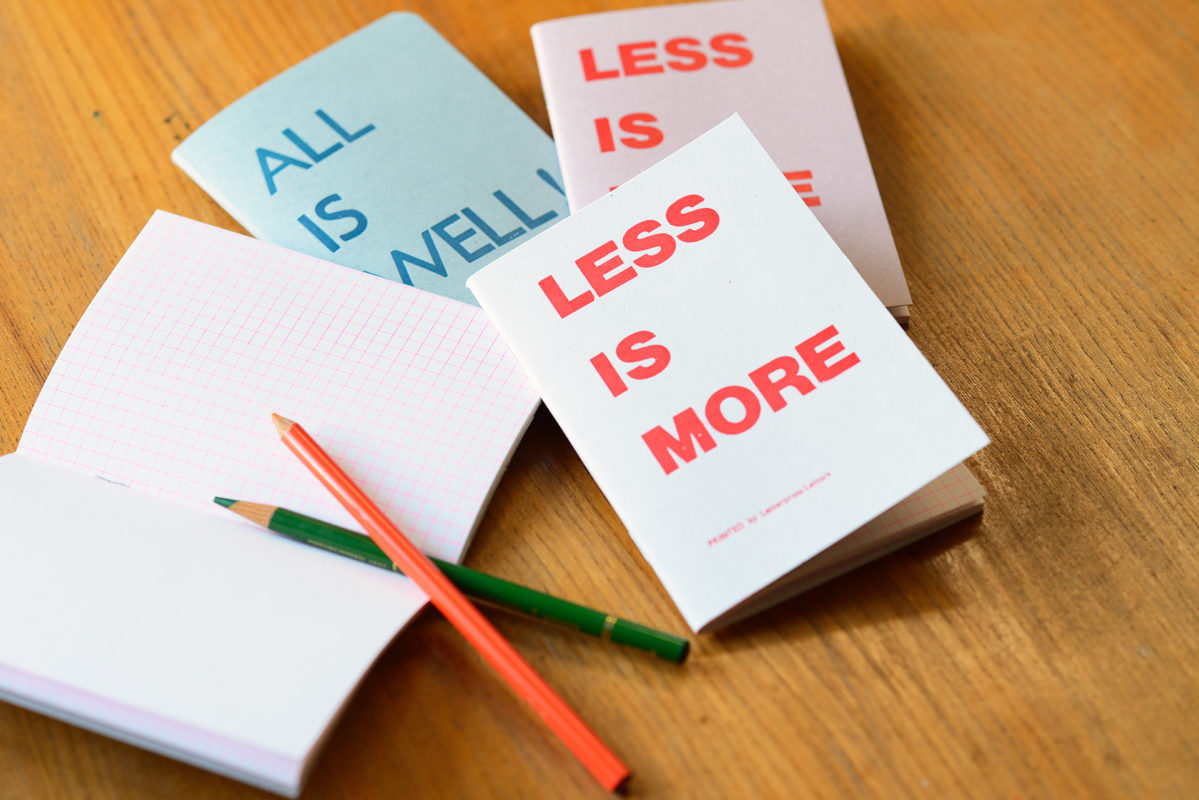
Aimie Eliot is a freelance journalist based in Tokyo. Read more Aimie Eliot on Sprudge.






